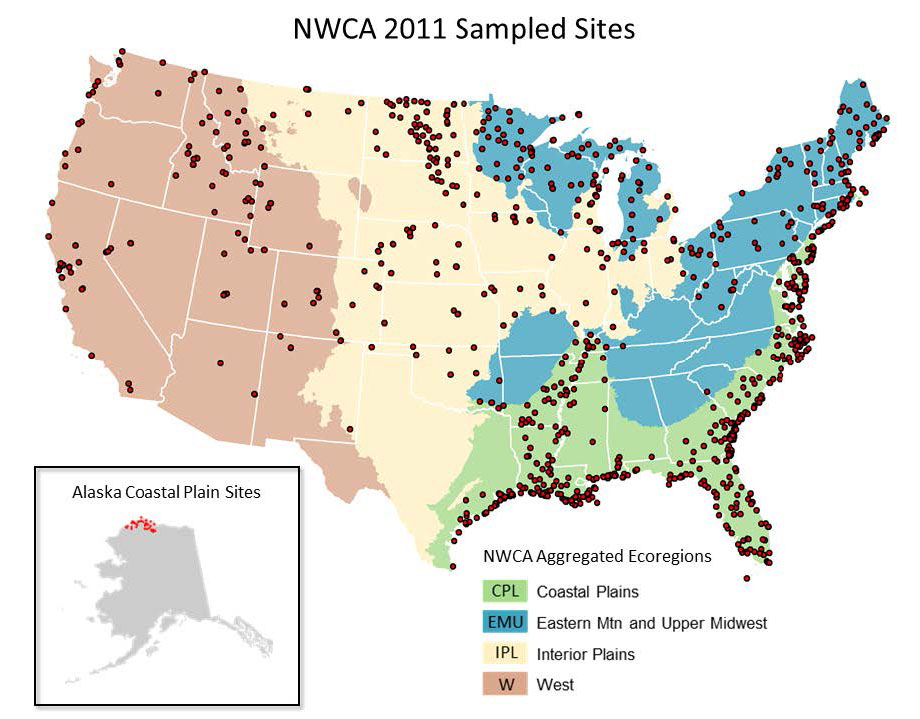The National Wetland Condition Assessment (NWCA) is the first-ever national survey on the ecological condition of the Nation's wetlands and is one of the five National Aquatic Resource Surveys initiated in 2006. These studies provide nationally-consistent and scientifically-defensible assessments of our lakes, rivers, wadeable streams, coastal waters, and wetlands, and can be used to track changes over time. The purpose of the survey is to generate statistically-valid and environmentally relevant reports on the condition of the Nation’s wetlands.
The NWCA only provides an overview of the condition (quality) of wetlands that remain in existence and does address wetland loss due to drainage or filling. The first NWCA surveys were completed in the summer of 2011; the survey was repeated in 2016 and 2021. The study is the product of cooperation and collaboration between EPA, states officials, tribes and scientists. EPA provided the funding for the study and states provided the fieldwork and expertise to complete the assessment. It is intended to compliment national wetland status and trends studies by the U.S. Fish and Wildlife Service that measure wetland gains and losses and estimate the quantity (number and area) of the nation’s remaining wetlands.
The NWCA is being used to:
- Determine the national & regional condition of wetlands (NWCA findings are not state-specific)
- Develop baseline information to evaluate change in condition over time
- Build state and tribal capacity for monitoring and analyses
Note: The NWCA is not being used to provide state-level information or for regulatory purposes.
For more information about the EPA’s NWCA, its design, results, findings, or future plans, please visit the EPA National Wetland Condition Website
For downloadable NAWM Draft Template NWCA Communication Documents for use by states and tribes to share with various audiences how the NWCA results relate to state wetland work, please go here. These include a general factsheet, administrative brief, legislative brief, and guidance for additional communications planning and social media efforts.
